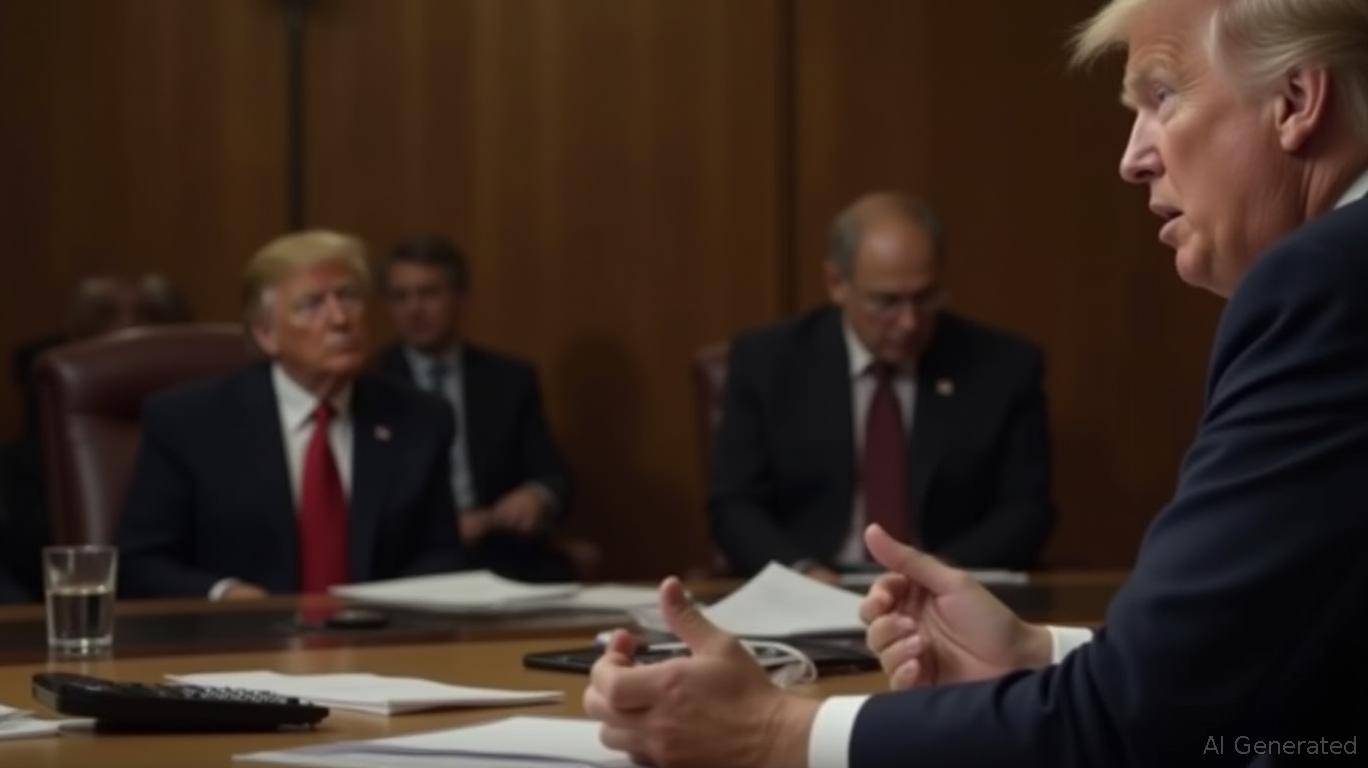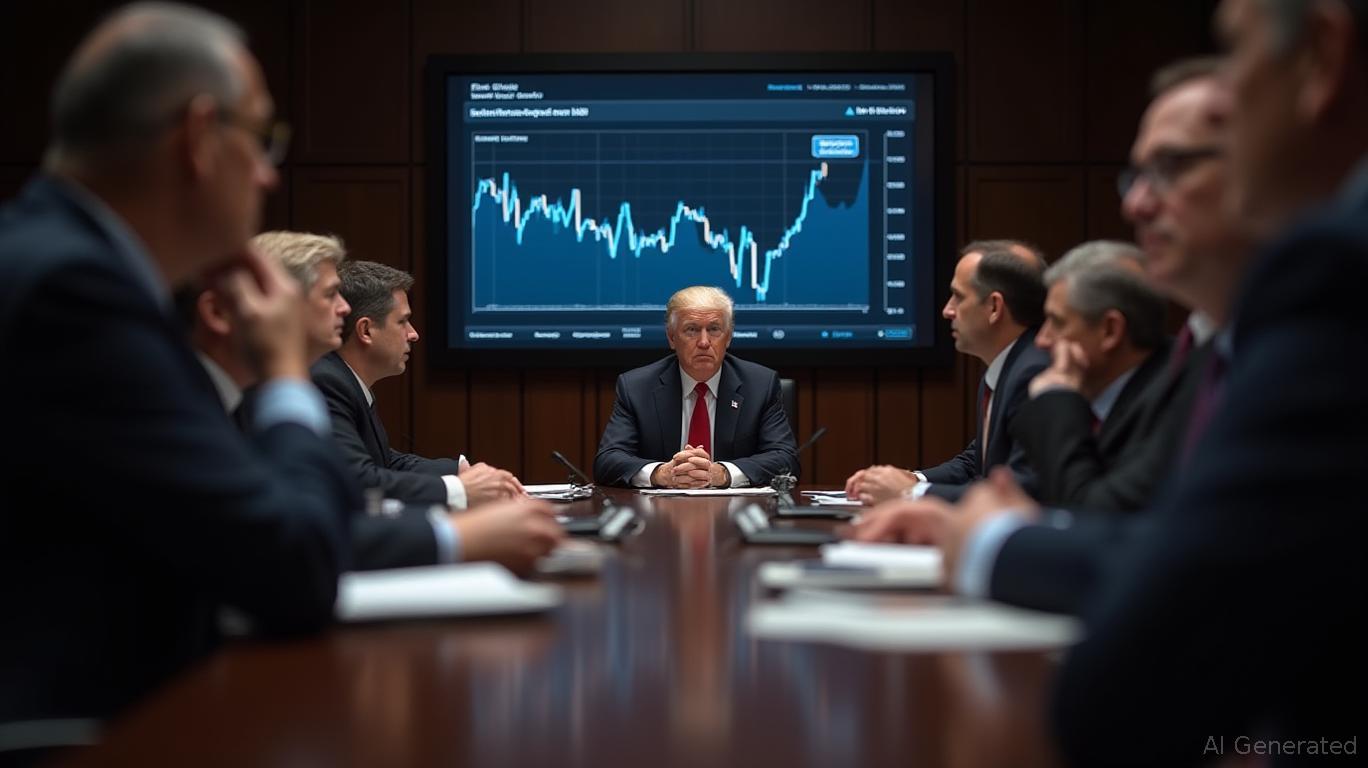Bitcoin Updates: Central Banks' Monetary Expansion Drives Bitcoin's Surge as a Safeguard Against Inflation
- Analyst Adam Livingston warns Bitcoin faces a "danger zone" as central bank reserves near critical levels, signaling potential for a major price surge. - Global M2 money supply expansion driven by Fed, ECB, and other central banks correlates historically with Bitcoin's bull cycles, mirroring 2017/2021 patterns. - Livingston argues Bitcoin's fixed supply makes it a hedge against uncontrolled money printing, with 2023-2024 M2 growth suggesting similar dynamics to prior bull runs. - Critics question the M2-
Adam Livingston Predicts Major Bitcoin Rally as Central Bank Reserves Approach Critical Levels
Bitcoin is on the verge of a substantial price increase as central bank reserves worldwide near thresholds that could ignite a fresh bull run, according to Adam Livingston, a financial analyst who monitors global monetary policy. This alert comes as data reveals an extraordinary rise in the M2 global money supply—a key indicator that has historically moved in sync with Bitcoin’s price trends.

The global M2 figure—which includes physical currency, checking and savings accounts, money market funds, and deposits under $100,000—has climbed sharply year over year, fueled by central banks’ aggressive monetary stimulus. Major institutions such as the U.S. Federal Reserve, European Central Bank, People’s Bank of China, and Bank of Japan have all boosted liquidity through interest rate reductions and asset purchases, driving the global money supply to unprecedented heights, as shown in the
Livingston’s research points out that the current pace of M2 growth closely resembles the patterns seen during Bitcoin’s record-setting rallies in 2017 and 2021. “When central banks inject large amounts of liquidity, it creates a ‘danger zone’ where conventional assets lag behind inflation, making alternatives like Bitcoin more attractive,” he explained. The figures, collected from 21 central banks across regions including North America, Europe, Asia, Latin America, the Middle East, and Africa, highlight the widespread nature of this monetary expansion, as illustrated by the M2 global chart.
Analysis of the M2 global data shows a recurring trend: rapid increases in liquidity often come before sharp rises in Bitcoin’s value. For instance, the 2020-2021 bull market aligned with massive stimulus measures from central banks, and the recent 2023-2024 surge in M2 suggests a similar scenario could be developing, according to the same chart. Experts emphasize that Bitcoin’s limited supply—capped at 21 million coins—positions it as a safeguard against unchecked money creation, a view that has gained momentum as inflation persists.
Some skeptics point out that the relationship between M2 and Bitcoin is not always consistent, noting times when Bitcoin’s price moved independently of liquidity trends. Nevertheless, Livingston argues that today’s climate—characterized by geopolitical instability and economic unpredictability—heightens the appeal of decentralized assets. “Bitcoin’s strength is its resistance to inflation, and with central banks driving M2 to all-time highs, conditions are aligning for a significant price move,” he stated.
The outlook for financial markets is becoming clearer: as the global M2 metric accelerates, Bitcoin may be on the brink of another bull run. Both traders and institutional investors are monitoring central bank actions and M2 growth to determine the best moments to enter the market. At present, the data strongly supports Bitcoin’s position as a hedge against the rapidly growing global money supply.
Disclaimer: The content of this article solely reflects the author's opinion and does not represent the platform in any capacity. This article is not intended to serve as a reference for making investment decisions.
You may also like
"Brazil and United States Seek Trade Agreement as World Turns Toward Protectionism"
- Brazil's Lula and Trump discussed a trade deal during their ASEAN summit meeting, with Lula claiming Trump "guaranteed" a resolution despite U.S. tariffs on Brazilian goods. - The U.S. imposed 50% tariffs in July over legal actions against Bolsonaro, which Lula called "mistaken," presenting a written defense during talks. - Lula highlighted Brazil's $410B trade surplus with the U.S. and urged Trump to leverage Brazil's regional influence, including Venezuela diplomacy. - Brazil resumed chicken exports to

Fed Balances Delicately as Trump Urges Rate Reductions While Inflation Concerns Persist
- FOMC to cut rates by 25 bps in October 2025, second cut this year, targeting 3.75%-4% range. - Cooling labor market and subdued inflation drive decision, with manufacturing/retail data to shape future adjustments. - Consumers see limited relief: mortgage rates near 6.34%, credit card rates at 20.03% remain largely unaffected. - Trump pressures Fed for aggressive cuts, but officials warn against inflation risks from tariffs and immigration policies. - Markets expect 1% rate cuts by 2026 end, with mortgage

XRP News Today: Indian Judiciary Acknowledges Cryptocurrency as Property, Establishing a Landmark for Investor Protections
- India's Madras High Court ruled crypto as property, blocking WazirX from redistributing a user's 3,532 XRP to offset hack losses. - The decision reinforces legal protections for digital assets, setting a precedent for investor rights and clearer regulatory frameworks. - By rejecting WazirX's "socialization of losses" plan, the court emphasized crypto custody distinctions and trust obligations for unaffected assets. - Experts highlight the ruling's impact on India's crypto ecosystem, aligning with global

Fed Lowers Interest Rates as Data Remain Unclear Due to Shutdown, While Focus Shifts to Tech AI Profits and Trade Agreement
- The U.S. Fed cuts rates by 25 bps for the second consecutive meeting, signaling potential policy easing amid a government shutdown and global trade tensions. - Big Tech earnings spotlight AI monetization, with Microsoft's Azure and Amazon's AWS under scrutiny as $420B AI spending by 2026 drives growth but risks margin pressures. - A preliminary U.S.-China trade deal delays Trump's 100% tariffs and resumes soybean purchases, marking de-escalation after months of escalating tensions. - Fed's rate cut coinc
